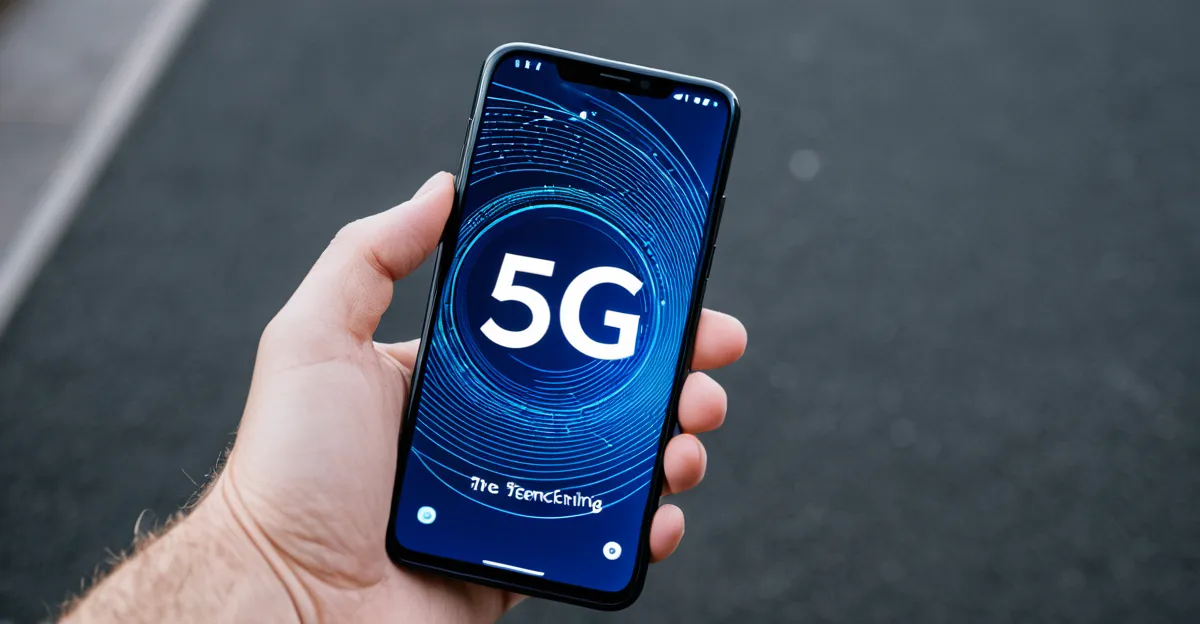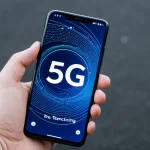5G Technology and Its Impact on UK Smartphones
The 5G technology overview reveals that this latest generation of mobile networks delivers significantly faster data speeds, ultra-low latency, and increased capacity compared to its predecessors. For UK smartphones, these enhancements mean users can stream high-definition content, engage in seamless video calls, and enjoy real-time gaming experiences without lag.
A core difference between 5G technology and earlier generations like 4G lies in its architecture and spectrum use. 5G employs higher frequency bands and advanced antenna technologies such as Massive MIMO, enabling not only faster downloads but also more stable connections in densely populated areas. Unlike previous networks, 5G supports a diverse range of applications beyond smartphones, including IoT devices and smart city infrastructure, which will indirectly enhance smartphone functionality in the UK.
Topic to read : How is smartphone usage evolving among different age groups in the UK?
The UK smartphone evolution has been closely tied to the 5G impact since the network’s initial rollout. Early adopters in major cities experienced immediate benefits, driving demand for 5G-capable smartphones. Adoption trends indicate rapid growth, with network providers expanding coverage from urban centers to suburban and rural areas. This expanding 5G infrastructure encourages consumers to upgrade devices, shaping the smartphone market in the UK.
Overall, the introduction of 5G technology marks a pivotal advancement for UK smartphones, transforming user experiences and setting the stage for future mobile innovations.
Also read : Are There Ethical Implications of Smartphone Artificial Intelligence in UK Computing?
Enhanced Speed, Connectivity, and User Experience
The introduction of 5G speed has markedly transformed UK mobile connectivity, delivering faster data transfers and significantly reduced latency. This enhancement means users enjoy near-instantaneous responses on their devices, which is especially beneficial for activities such as high-definition streaming and real-time gaming. For smartphone users, the improved connection quality greatly enhances everyday tasks, like video calls and web browsing, by reducing buffering and delays.
5G technology not only increases speed but also boosts network reliability. This results in a more stable connection, even in densely populated areas where mobile demand is high. Consequently, users benefit from broader network coverage, minimizing dead zones and ensuring consistent access across urban and rural UK locations. This evolution in connectivity supports more seamless integration of smartphones into daily life, empowering users to maximize their devices’ potential across various functions.
Leading 5G Smartphone Models in the UK Market
Exploring the popular UK 5G smartphones reveals a dynamic lineup from several renowned smartphone brands. Leading the market are devices from established manufacturers such as Samsung, Apple, and OnePlus, each offering powerful 5G capabilities suited to different user preferences. For example, Samsung’s Galaxy S23 series showcases cutting-edge processors and enhanced camera systems, making it a favorite among performance-focused users. Apple’s iPhone 15 models combine robust 5G connectivity with seamless integration into the iOS ecosystem, appealing to those who value both speed and user experience.
Noteworthy features enabled by 5G in these top devices include ultra-fast download speeds, low latency for gaming and streaming, and improved video call quality. Several models also support advanced technologies like 5G-enabled augmented reality applications and cloud gaming, pushing the boundaries of what smartphones can offer. OnePlus’ 11 model, for instance, emphasizes smooth 5G performance with its flagship-grade hardware and OxygenOS optimisations, making it a compelling choice in the market.
Price ranges for these popular UK 5G smartphones vary broadly, accommodating diverse budgets. Entry-level 5G devices start around £200-£300, providing reliable connectivity and basic features for everyday users. Mid-range phones often fall between £400 and £700, delivering enhanced camera capabilities and faster processors. Flagship models from premium brands can exceed £1000, catering to tech enthusiasts and professionals requiring top-tier performance. Availability remains high across major retailers and network carriers, ensuring users can access these smartphones regardless of their preferred shopping channels.
The Evolution of Mobile Usage Before and After 5G
The transition from 4G to 5G has brought a profound network transformation, reshaping how mobile devices are used across the UK. Before 5G, mobile device usage in the UK was largely shaped by the limitations of 4G networks, which, despite offering good speeds for streaming and browsing, often struggled with congestion and latency in busy areas. Post-5G, users experience greatly enhanced connectivity, with faster download speeds and lower latency fundamentally altering smartphone performance.
This shift in mobile device usage UK is evident in several ways. Firstly, consumers now engage with data-heavy applications like augmented reality, cloud gaming, and ultra-high-definition streaming more frequently and seamlessly. The 5G vs 4G performance gap is not just about speed; it’s about enabling new forms of interaction and real-time responsiveness on smartphones. For instance, real-world user testimonials highlight smoother video calls, near-instant app loading, and more reliable connections even in dense urban centers.
The network transformation enabled by 5G also supports a change in daily behaviour. People have become more reliant on their devices for virtual work and social connections, as well as smart home integration and IoT applications. The increased bandwidth and network reliability encourage users to stay connected longer and perform complex tasks on the go, marking a clear departure from the limitations experienced during the 4G era.
In summary, the comparison of smartphone performance pre- and post-5G reveals that the network transformation is more than a technological upgrade; it drives new patterns in mobile device usage UK, enhancing user experience and expanding possibilities.
5G Network Coverage and Accessibility in the UK
The 5G availability UK landscape is evolving rapidly, with major carriers actively expanding their networks. Key providers such as EE, Vodafone, and O2 have made significant strides in increasing their 5G reach, focusing primarily on major urban centers. These carriers collectively cover a majority of UK cities, offering a foundation for broader 5G access.
However, there remains a notable disparity between urban versus rural accessibility. Urban areas benefit from denser infrastructure and higher demand, which accelerates network expansion. Rural regions, on the other hand, currently experience limited 5G signals due to geographical challenges and the lower financial incentive for carriers to invest heavily. This uneven access affects user experience and adoption rates in less-populated regions.
Several factors influence the network expansion and subsequent 5G adoption across the UK. These include infrastructure investment, regulatory support, and consumer demand. The rollout also depends on the availability of suitable spectrum and the deployment of new small-cell technology to address coverage gaps. As providers continue to develop their networks, improvements in coverage and speed are expected to reduce the urban-rural divide over time. Understanding these dynamics is essential to grasp the current state and future trajectory of 5G accessibility in the UK.
Future Implications and Market Trends for UK Smartphones
The UK smartphone market is rapidly evolving, driven by 5G future trends that promise faster speeds and lower latency. These advancements are set to transform not only how users access information but also how businesses operate and innovate. The rollout of 5G-compatible devices is accelerating technology adoption, enabling a new wave of applications such as augmented reality, smart cities, and enhanced mobile gaming.
Predicted market trends point to increasingly powerful smartphones with enhanced AI capabilities and improved battery life. Consumers can expect new features like foldable displays and more seamless integration with wearable technology. This evolution supports a shift towards more connected lifestyles, where devices serve as hubs for managing health, home security, and personal productivity.
The impact on daily life will be profound, as 5G opens opportunities for remote working, telemedicine, and real-time collaboration. Businesses in the UK will leverage this faster connectivity to boost efficiency and foster innovation through Internet of Things (IoT) applications and data analytics. As the UK smartphone market embraces these trends, the collective move towards smarter, more adaptive technologies will redefine how society interacts with the digital world.


